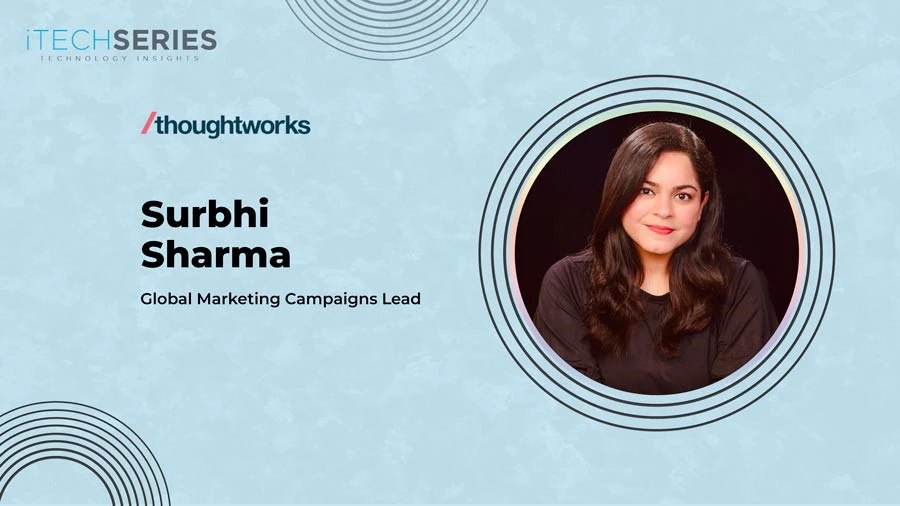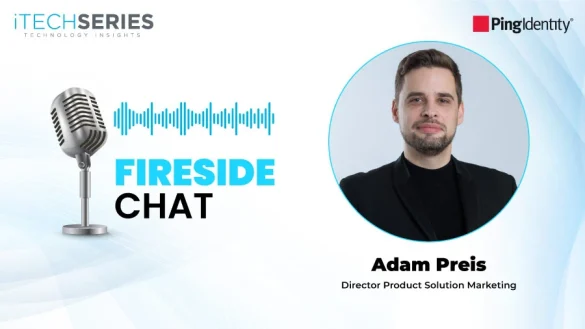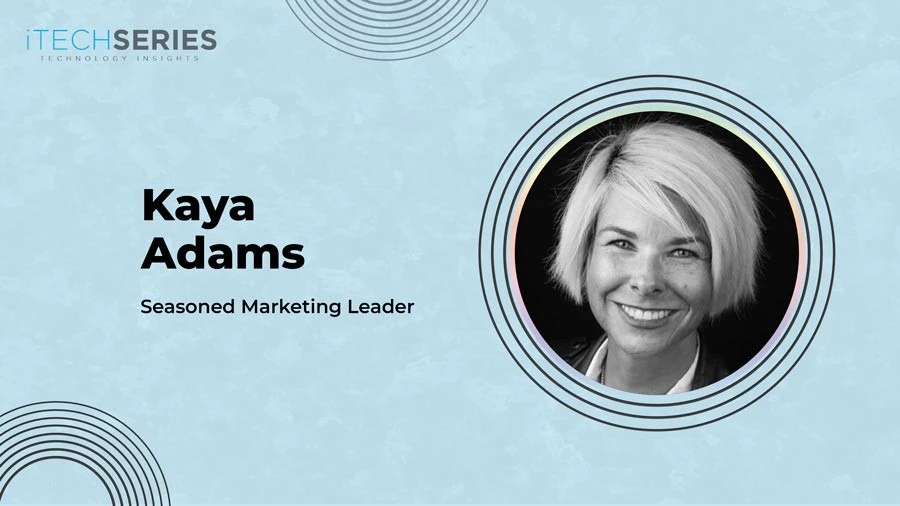Surbhi Sharma, Global Campaigns Lead at Thoughtworks, shares her journey leading global campaigns and ABM initiatives across regions. She dives into the art of balancing global consistency with regional relevance, aligning strategy with execution, and leveraging AI, data, and collaboration to drive demand, enhance personalization, and deliver high-impact marketing at scale.
Thanks for joining us, Surbhi! Could you walk us through your career path and what’s been key in your journey?
Hello, thank you; the pleasure is all mine!
I’m a growth-oriented marketing leader currently leading global campaigns at Thoughtworks. My role involves mentoring a talented team of campaign strategists, guiding the planning and execution of integrated marketing initiatives that directly contribute to our brand visibility and demand generation goals.
Over the years, I’ve had the privilege of working with leading B2B and B2C brands. This diverse experience has allowed me to seamlessly integrate best practices from both spheres. My core expertise has been around demand generation, campaign management, and digital marketing focus, but my innate curiosity has always led me to explore various other forms of marketing and continuously learn. I’m passionate about deeply understanding the ever-evolving nuances of consumer behavior and crafting strategies that enable organizations to forge stronger connections. Furthermore, I highly value and actively seek opportunities to mentor fellow marketing professionals, which in turn enriches my learning and growth.
Youʼve led global integrated campaigns across regions—what strategies do you use to balance regional differences and maintain brand consistency?
That’s a fantastic question, and it gets to the heart of what makes global integrated campaigns both challenging and incredibly rewarding. For me, balancing global consistency with regional relevance is key to successful integrated campaigns. My strategy centers on a framework of centralized guidance, decentralized execution, and continuous learning, all powered by strong collaboration and data.
I think any global campaign should always start with the what and the why, i.e., defining clear global campaign objectives and KPIs, key messaging frameworks, and narrative. This, layered with a suite of adaptable core creative assets (e.g., hero imagery, templates, etc.), a comprehensive content strategy, and usable enablement assets, establishes a strong starting point. Continuous communication and collaboration with regional marketing teams to gather local trends and insights is non-negotiable, as the message is global, but the delivery has to resonate regionally. Lastly, regular syncs, collaborative performance reviews, and consistent exchange of information foster a culture of continuous learning and improvement.
Tell us about a particularly difficult GTM campaign you’ve managed and how it turned out to be a great success.
One particularly challenging go-to-market campaign I led was the launch of a global executive event series, directly tied to promoting our key offerings across multiple geographies. The core challenge was an extremely tight timeline—we had to strategize and execute this complex, multi-region initiative with everyone in perfect sync, almost simultaneously. Ultimately, clarity of purpose, agile methodologies of working, and active collaboration amongst the stakeholders enabled us to deliver the campaign successfully.
How do you decide on the right balance between paid media, executive engagement, events, and digital campaigns when targeting a specific account?
I think in ABM, the right balance isn’t a fixed formula; it’s a dynamic and highly personalized mix that depends entirely on deep account intelligence, the specific stage of the buyer’s journey, and the overall ABM tier of that account.
It all starts with comprehensive research on the account, i.e., understanding the historical interactions, intent expressed, external research-backed data, and mapping the key stakeholders from the account. Next would be to understand the buyer journey stage of the key stakeholders and map the tactics that would be ideal to progress them deeper in the funnel. Lastly, for any ABM activation to yield desirable results, it has to be conducted in collaboration with field marketing and sales teams.
As a marketing leader, which essential metrics do you focus on to monitor global campaign performance?
My focus on metrics goes beyond simple vanity metrics to truly understand the impact on business objectives and revenue while also accounting for regional nuances. I employ a layered approach, looking at both leading and lagging indicators across different stages of the funnel.
- Revenue contribution: Marketing activated and influenced revenue.
- Pipeline Impact: Metrics across the funnel-engaged, MQLs, SALs, Opps, Wins.
- Account coverage impact: Account coverage and penetration.
- Brand visibility and engagement: Impressions, reach, engagement, SOV, etc.
What strategies have proven most effective in generating high-quality leads across different regions like US, EMEA, and APAC?
Generating high-quality leads across diverse regions like the US, EMEA, and APAC isn’t about applying a single playbook; it requires a nuanced understanding of cultural, regulatory, and market-specific dynamics. My strategy is built on a foundation of deep regional insights, a mix of global and localized content and tactics, optimized channel mixes, and strong sales alignment.
“Generating high-quality leads across diverse regions isn’t about applying a single playbook; it requires a nuanced understanding of cultural, regulatory, and market-specific dynamics.”
How can AI be leveraged to enhance global campaign planning, personalization, and analytics?
That’s a fantastic and timely question, as AI is truly revolutionizing the marketing landscape and also impacting consumer behavior. I see AI not as a replacement for human ingenuity but as a powerful co-pilot that enhances our capabilities.
Breaking down my response as follows:
- Enhancing Global Campaign Planning and Hyper-Personalization: The ability of AI to provide market intelligence, forecast trends, analyze competitive landscapes, and layer it with insights on audience behavior and segmentation based on first- and third-party data enables marketers to establish a strong foundation for conducting campaigns. This, coupled with the ability of AI to now help marketers deliver hyper-personalized campaigns in the truest sense and optimize journeys in real time, enables efficient planning and delivery.
- Elevating Analytics G Optimization: Beyond simply reporting on what happened, AI can develop sophisticated multi-touch attribution models, quickly flag unusual campaign performance trends, and predict future outcomes, allowing us to proactively intervene with appropriate strategies.
How do you define and measure campaign success, especially for longer sales cycles and complex B2B products?
Defining and measuring campaign success for longer sales cycles and complex B2B products requires a fundamentally different approach than for, say, a direct-to-consumer e-commerce campaign. It’s less about immediate conversions and more about orchestrating a series of meaningful engagements that collectively move accounts through the pipeline, influence purchasing decisions, and ultimately contribute to profitable revenue growth. It requires a holistic view, sophisticated tracking, and deep collaboration between marketing and sales.
When faced with numerous GTM and campaign ideas, how do you help prioritize the ones your team should focus on?
For me, prioritizing initiatives isn’t about saying ‘no’ to good ideas, but about saying ‘yes’ to the best ideas that will drive the most impact against our overarching business objectives.
Every good idea should have a strong ‘what and ‘why’—what is the idea all about? What will it help us drive, and why? Is the effort mapped to bring the idea to life vs. the impact justifiable? If yes, do we have cross-functional dependency for the same? What is the best way to navigate the same? Can we show some quick wins first and get sponsorship from our stakeholders? – These are some of the questions to consider when prioritizing ideas within the team.
Marketing campaigns often face challenges. How do you handle setbacks in your marketing programs, and what steps do you take to learn from them?
I think challenges are an inherent part of any marketing program, especially in dynamic global environments. My philosophy is that setbacks are not failures but invaluable opportunities for learning and optimization. So itʼs always good to learn, reflect, and continue to evolve.
About Surbhi Sharma
Surbhi Sharma is a growth-driven, award-winning marketing leader with 13+ years of experience across B2B and B2C sectors. Currently leading global campaigns at Thoughtworks, she specializes in demand generation, integrated marketing, and campaign strategy. Surbhi is known for her outcome-based approach, deep understanding of consumer behaviour, and ability to align marketing with business goals. She also takes pride in mentoring teams and fostering continuous learning within her marketing functions.











